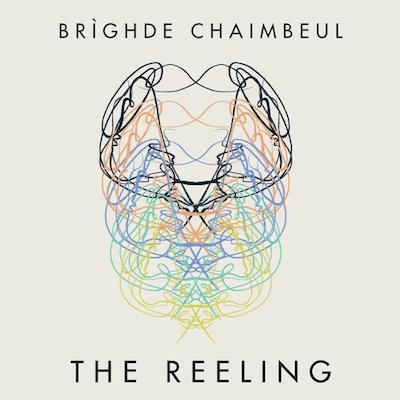The first impression of Brìghde Chaimbeul’s album, The Reeling, is the simplicity of her music. The clean notes of the Scottish smallpipes seem almost to play themselves, cascading from the instrument like water. It is only gradually that the full complexity begins to unfold, bringing with it a delicious sense of discovery. Instructions from the record label – River Lea, a new traditional music outlet set up by Rough Trade’s Geoff Travis, Jeannette Lee and Tim Chipping – are to play it loud. This is not a standard requirement for folk music, but turning the volume reveals the layers of live sound that makes this record something special.
Brìghde Chaimbeul is a piper who, although only 20-years-old, already has thirteen years of piping and a series of awards behind her, notably the BBC Radio Two’s Young Folk Award. Gigs have included playing as as the Lone Piper at the 2016 Edinburgh Military Tattoo, where she played the full-sized Great Highland bagpipes. but on The Reeling she plays the smaller, bellows-powered version more suited to collaboration with other musicians. These are not just any musicians either: Aidan O’Rourke of Lau plays violin, Radie Peat from Lankum plays concertina and Rona Lightfoot sings, but even that hardly begins to explain the sounds Chaimbeul makes. Lightfoot, 82-years-old, is also a piper and her singing style is canntaireach, Gaelic for ‘chanting’, which is a bagpipe teaching aid With it, she sings the sounds the pipes make – no words, just textures and tones. This backing band ties Chaimbeul into the heritage of her music – Lightfoot inspired her to take up the pipes – and the best, most experimental purveyors of Celtic music.
Like Laura Cannell’s Hunter Huntress Hawker, The Reeling was recorded live on location. The East Church, in Cromarty on the Black Isle, is a simple, barn-like building with an austere Georgian interior, and an ancient history. As it did for Cannell, the setting fills the recording with atmosphere, and the sound of the musicians are beautifully captured, including the mechanics of the instruments – the creaks, whistles and sighs – while the music seems to fill a space that is somehow inside us. The simplicity of Chaimbeul’s sound results from innovative methods of arranging for the smallpipes, developed with O’Rourke. The bellows, squeezed under one arm while playing, seem to fill the pipes with a stream of pure sound, captured and released by the piper. Behind the impossibly liquid notes a drone sounds at two simultaneous pitches. When Lightfoot sings, her mysterious delivery like an incantation in a lost language, the result is remarkable: rich and deep, yet light and fleeting.
Chaimbeul’s music seems to playing both now and, simultaneously, a thousand years ago. This is partly an illusion, with smallpipes a late 20th century recreation, but the impression cannot be shaken that these sounds exist outside of individual perceptions of time. The Reeling is an album of mostly Gaelic tunes, that is both a tribute to the well of cultural history from which Chaimbeul draws, and a fresh, exciting take on a music that is not nearly as widely appreciated as it deserves. A couple of Bulgarian tunes are sonorous and reflective, not as airborne as the Hebridean music, but equally suited to the style. The four musicians on The Reeling have produced a unique, exciting and forward-looking album that set the bar for 2019 very high indeed, and strongly suggests that Scottish folk music is both living and thriving.



